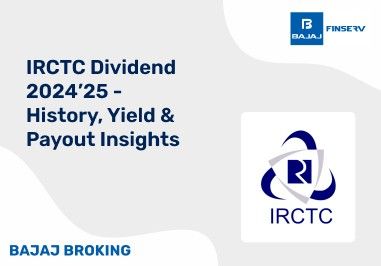BAJAJ BROKING
Tankup Engineers IPO is Open!
Open a Free Demat Account
Trade Now, Pay Later with up to 4x
Track Market Movers Instantly
What Are Embedded Derivatives?
Synopsis:
The word ‘embedded’ represents something that lies within something else. Embedded derivatives are financial instruments that are embedded within a host, that may be a non-financial instrument/agreement, and that you can invest in like conventional derivatives contracts.
Investors may be familiar with derivatives contracts, especially in the commodities markets, and even in the stock markets. However, there are new ways of trading and investing that evolve and regain some of the old methods that are modified to suit investors. If you haven’t heard about embedded derivatives, this is your chance to know more. Some investors refer to these contracts as hybrid securities. As the name suggests, embedded derivatives are financial derivatives contracts that are integrated within wider contracts or instruments that may be financial or not. If you are an investor who deals with derivatives in stock trading, you may want to know more about such investment instruments.
Article Highlights
Derivative contracts may be a challenge for some investors who are less savvy with these investment channels than others, but embedded derivatives may pose even more of a challenge. Nonetheless, in the context of derivatives, here are the highlights of the article that will reveal all you need to know about embedded derivatives:
- Understand Embedded Derivatives
- Grasp Embedded Derivatives with an Example
- Embedded Derivatives in Use
Understand Embedded Derivatives
You may be used to hearing about derivatives contracts that derive their value from underlying assets within the contract. When the price of the underlying assets fluctuates, the value of the derivative contract also fluctuates (as it depends on the underlying asset). Embedded derivatives are also financial contracts, but they are embedded or integrated within other larger agreements. The instrument that the embedded derivative is hidden in is typically known as the ‘host’. Embedded derivatives are not traded as they are, on their own, but as part of a broader agreement (the host). The contracts that host embedded derivatives, fall within a variety of agreements made between parties. These can range from loan agreements and bonds, to lease agreements. Furthermore, embedded derivatives take the shape of options, futures, or swaps.
In the arena of financial accounting, embedded derivatives pose a concern for bookkeepers and accountants alike as their value may be different from that of the host instrument and this has to be accounted for. It is important to know that while embedded financial derivatives may be implanted within host non-derivative contracts, they each have their distinct values.
Embedded Derivatives - An Illustrated Example
Say, for instance, a company that is publicly listed issues bonds. However, the principal amount and the rate of the coupon are indexed against the price of gold. In such a framework, payments via the bond are directly linked with the value of gold that is currently fixed in the market. In such a case, bonds are the component that falls in the non-derivative part, and gold is the derivative component (embedded in the bonds). There are many more embedded derivatives examples and they can be seen while discussing the uses of embedded derivatives.
Uses of Derivatives
Embedded derivatives are used in several kinds of contracts or agreements. Typically, you will discover that they are employed within lease contracts, insurance contracts, preferred stocks, and convertible bonds. Equity-linked notes, commodity arrangements, and supply and purchase agreements are other sources of embedded derivatives. These embedded derivatives can be found in customised contracts that two parties agree on, and cannot be found as tradable instruments in the common stock or securities markets (in exchanges). Interested parties agree on a contract and several investors rely on such derivatives to take advantage of price movements and the amplification of returns they may potentially offer.
As mentioned earlier, for accounting purposes, embedded derivatives and hosts are treated as two separate instruments for balancing books and accounting reasons. However, it is important to note that embedded financial derivatives have an impact on the terms of the cash flows of the host agreement.
Hybrid Financial Contracts
As financial contracts go, embedded derivatives and host contracts may be termed ‘hybrid’ contracts as they contain two components that serve each other. The embedded derivative, in effect, is added to the host agreement. There are different host contracts such as debt instruments, preferred stock, insurance, and lease agreements to name a few. The embedded derivatives of these, respectively, are put or call options, conversion options, equity indexation, and interest rate indexation. Embedded derivatives reflect a new concept in the investing scenario, but it’s important to know about it.
Disclaimer: Investments in the securities market are subject to market risk, read all related documents carefully before investing.
This content is for educational purposes only. Securities quoted are exemplary and not recommendatory.
For All Disclaimers Click Here: https://bit.ly/3Tcsfuc
Share this article:
Read More Blogs
Disclaimer :
The information on this website is provided on "AS IS" basis. Bajaj Broking (BFSL) does not warrant the accuracy of the information given herein, either expressly or impliedly, for any particular purpose and expressly disclaims any warranties of merchantability or suitability for any particular purpose. While BFSL strives to ensure accuracy, it does not guarantee the completeness, reliability, or timeliness of the information. Users are advised to independently verify details and stay updated with any changes.
The information provided on this website is for general informational purposes only and is subject to change without prior notice. BFSL shall not be responsible for any consequences arising from reliance on the information provided herein and shall not be held responsible for all or any actions that may subsequently result in any loss, damage and or liability. Interest rates, fees, and charges etc., are revised from time to time, for the latest details please refer to our Pricing page.
Neither the information, nor any opinion contained in this website constitutes a solicitation or offer by BFSL or its affiliates to buy or sell any securities, futures, options or other financial instruments or provide any investment advice or service.
BFSL is acting as distributor for non-broking products/ services such as IPO, Mutual Fund, Insurance, PMS, and NPS. These are not Exchange Traded Products. For more details on risk factors, terms and conditions please read the sales brochure carefully before investing.
Investments in the securities market are subject to market risk, read all related documents carefully before investing. This content is for educational purposes only. Securities quoted are exemplary and not recommendatory.
For more disclaimer, check here : https://www.bajajbroking.in/disclaimer
Our Secure Trading Platforms
Level up your stock market experience: Download the Bajaj Broking App for effortless investing and trading













